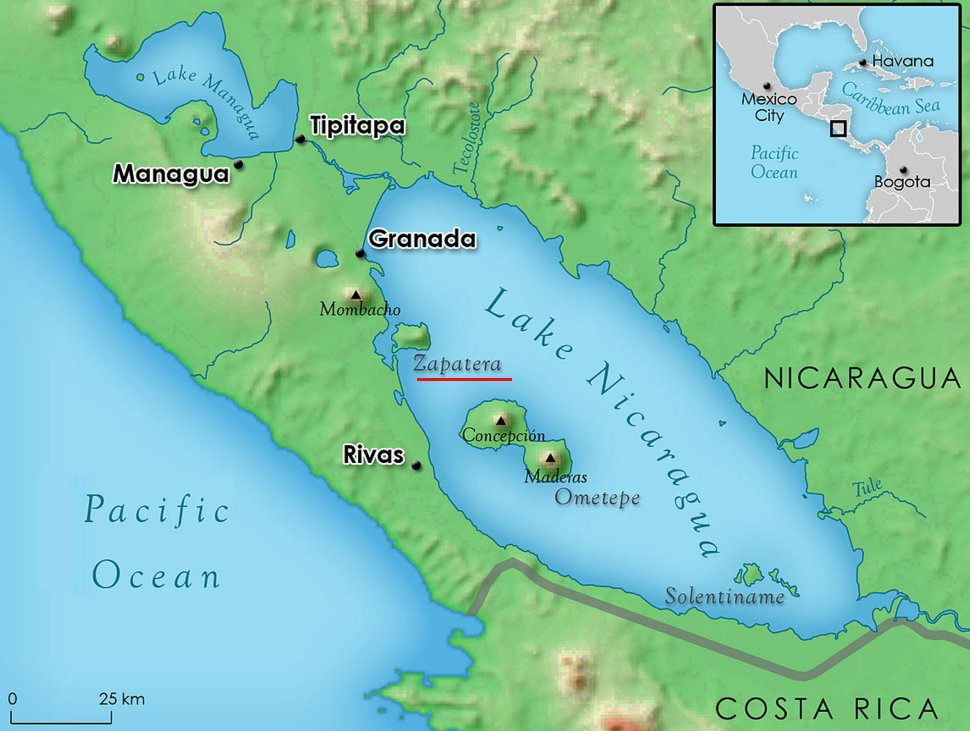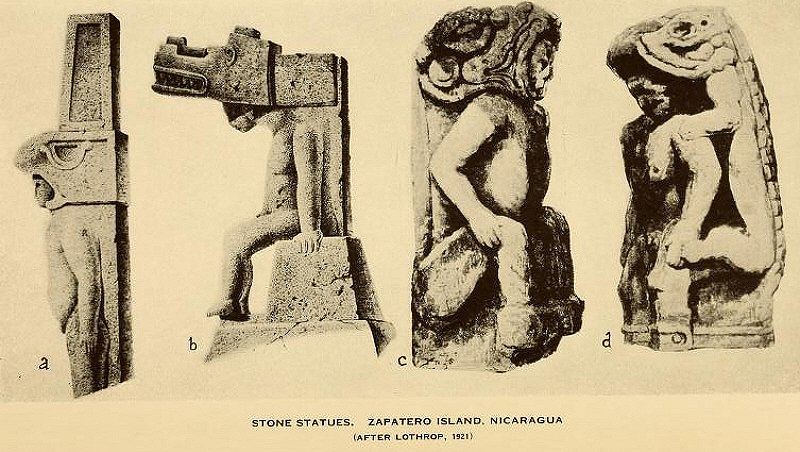MessageToEagle.com – Fifteen impressive ancient statues were discovered in 1849 by U.S. diplomat Ephraim George Squier on Zapatera Island, in the western part of Lake Nicaragua, date to between 800 A.D. and 1200 A.D.
The statues are from present-day Nicaragua’s pre-Hispanic era and their extraordinary precision with which the statues were sculptured surprises experts making copies of them.

Currently, at the San Francisco Convent, in the colonial city of Granada, the sculptures consist of columns of black basalt 1.25 to 2.25 meters (4.1 to 7.4 feet) high by 60 centimeters (about 2 feet) wide, on average, with human and animal figures carved on them.
Sculptor Pedro Vargas, the director of the Granada School of Fine Arts, said that every one who was involved with making the replicas could appreciate the beauty of the work as sculpture, the exact position of the nose, the corners of the mouth, because the norms that they used were the same ones we use today.
Until now, these pre-Columbian sculptures had only been studied by archaeologists, but over the past year they were examined for the first time by sculptors and architects to get an impression of how best to reproduce them.

“The delicacy of the work can be seen, the precision with which it was done. We’re asking ourselves who taught (the sculptors), how – and where – they got that knowledge, … because these were not works made by beginners’ hands, they were made by experienced people,” Vargas said.
According to historians, the sculptures were created by the Chorotegas, who considered the island to be a sanctuary, and they had Mesoamerican and South American artistic influences.
The Chorotegas were the most powerful and indigenous American Indian tribe of northwest Costa Rica at the time of the Spanish conquest. During the colonial period, the Chorotegan culture and language disappeared.
The Chorotegas (which means “fleeing people”) migrated around A.D. 500 from Southern Mexico into the Nicoya Peninsula to escape slavery. Their customs, language and calendar were largely influenced by more advanced cultures of Mexico and Guatemala.
The influence of the Mayans was evident in their written language and use of a calendar, while their spoken language, Nahua, is distinctly Aztec in origin.
According to EFE, the reproductions of the statues were made in concrete, with the original measurements and cracks caused by age, as part of the Colonial Route and Volcanoes tourist project, sponsored by the European Union in Nicaragua and the Luxembourg Agency for Development Cooperation.
The new concrete sculptures, which weigh between 182 and 364 kg (400 to 800 lb.), were taken to the island in small boats this past week for the inauguration of the Zapatera Archipelago National Park as a new tourist destination.
Once on the island, the reproductions had to be transported by large work teams up rough slopes with pulleys and tackle and other ancient methods to the site where the originals had been located.
The reproductions are now awaiting a treatment program that will give them the same appearance as the originals.
MessageToEagle.com






